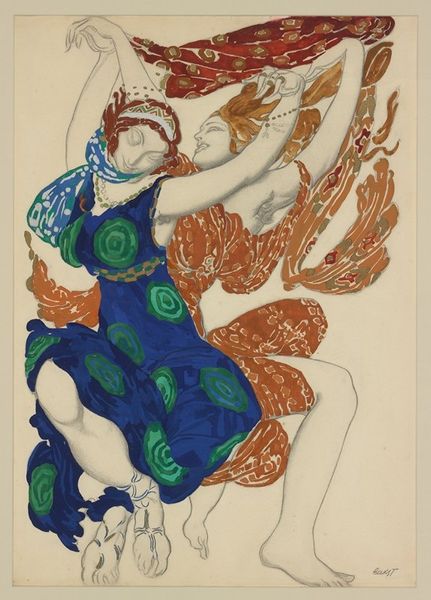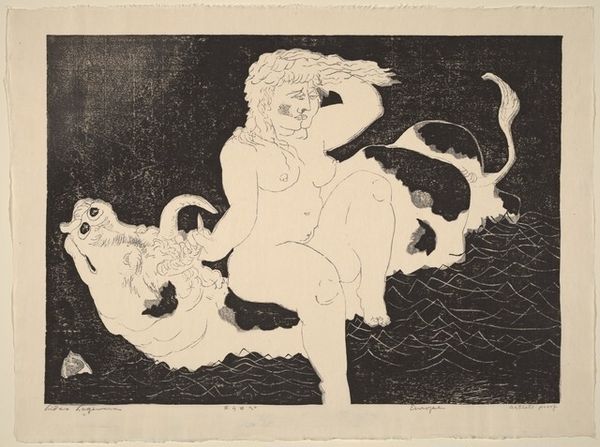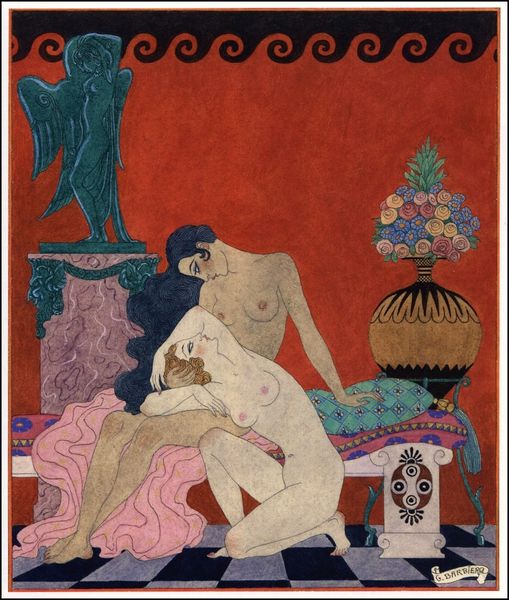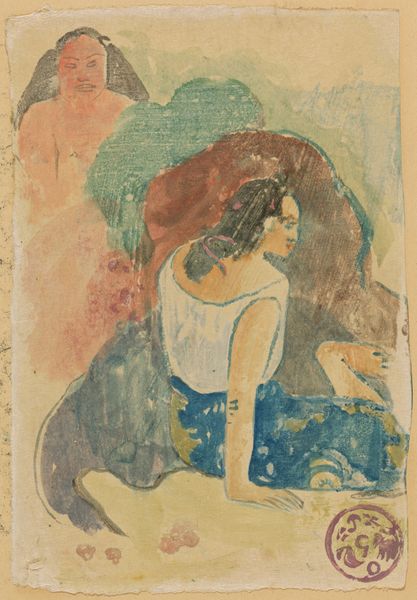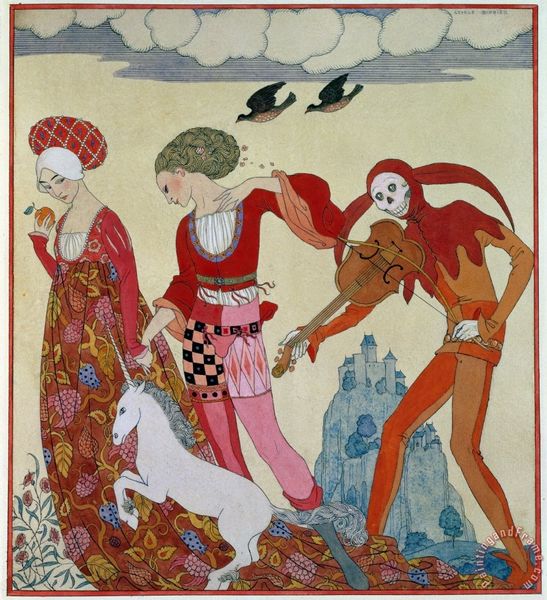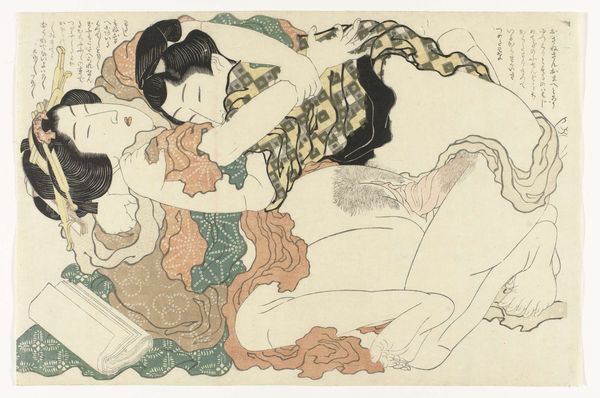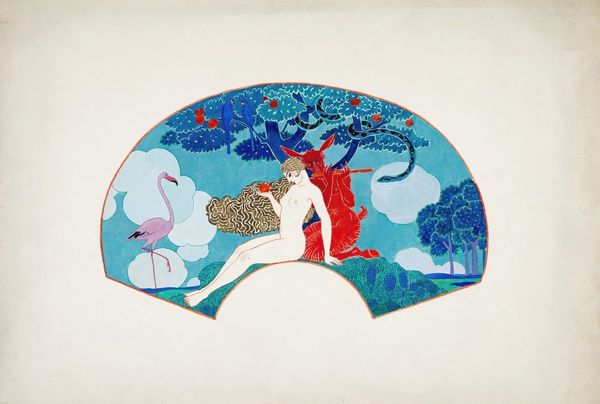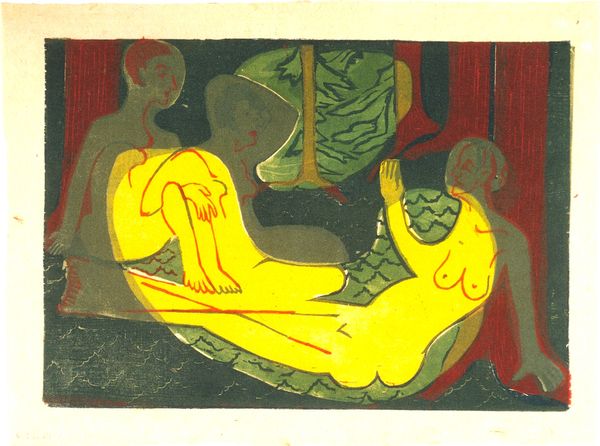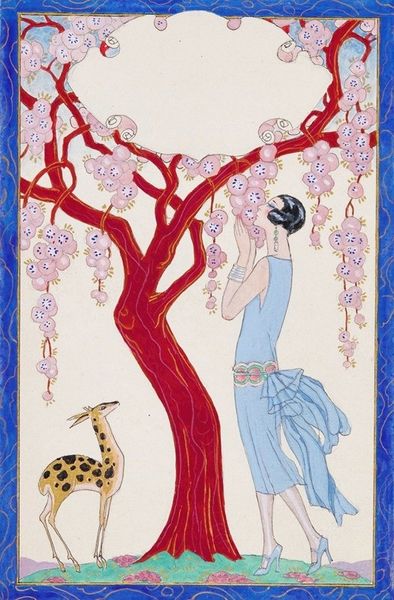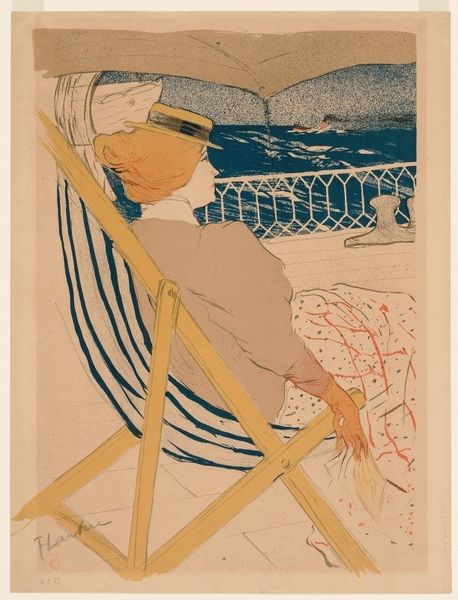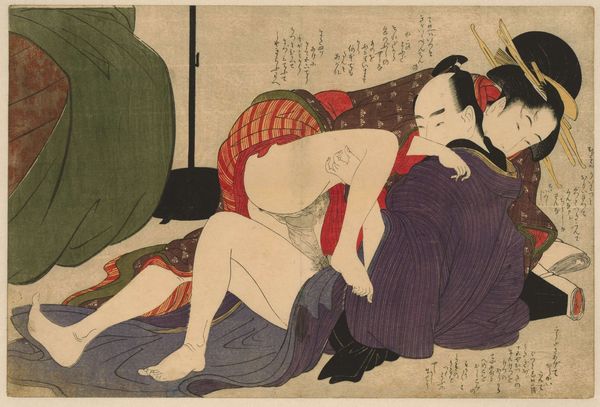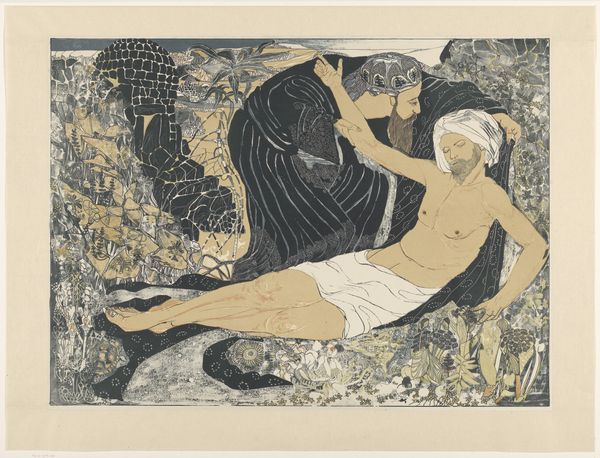
painting, watercolor
#
portrait
#
art-nouveau
#
painting
#
figuration
#
watercolor
#
naive art
#
orientalism
#
painting art
#
decorative-art
#
decorative art
#
watercolor
Copyright: Public Domain: Artvee
George Barbier’s 'Cleopatra' is an illustration marked by its stylized composition and use of color and line. Predominantly blue hues, with touches of red and gold, create a scene of nocturnal opulence. The figures, especially Cleopatra, are rendered with elongated forms, characteristic of the Art Deco aesthetic. The visual structure hinges on a tension between flatness and depth. Barbier employs a shallow pictorial space, emphasizing decorative patterns over realistic perspective. Note how the rose garland acts as a visual bridge, connecting the two figures and drawing the viewer's eye across the composition. This arrangement rejects conventional depth, instead favoring a rhythmic distribution of shapes and colors. The interplay between the figures and the geometric patterns of the fabrics suggests a fascination with artifice and the construction of identity. Barbier does not aim to portray Cleopatra as a historical figure but rather as an emblem of exoticism and luxury. The artist destabilizes established representational techniques, inviting viewers to consider art's capacity to create meaning through form and arrangement rather than through imitation.
Comments
No comments
Be the first to comment and join the conversation on the ultimate creative platform.
